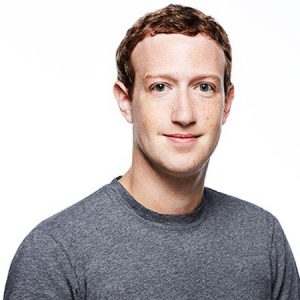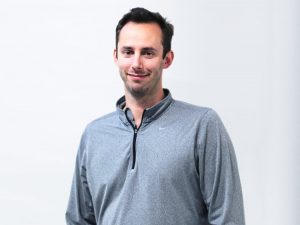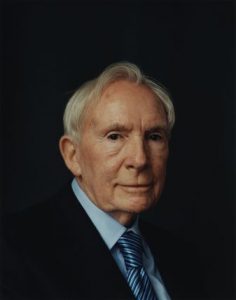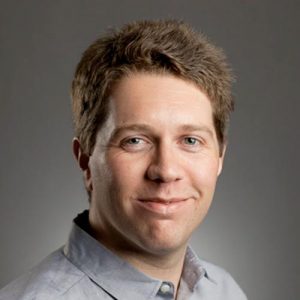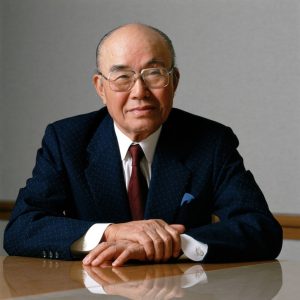Konosuke Matsushita: The Founder & the Former CEO of Panasonic Corporation
The story of the industrialist and the famous Japanese God of Management, Konosuke Matsushita, is nothing more than a roller coaster ride. The Japanese entrepreneur went through a lot of struggle and faced all type of conflicts, but, at last, emerged as the greatest leader, with its largest Japanese consumer electronics company Panasonic. The writer of four million sold copies of the Developing A Road To Peace And Happiness Through Prosperity and the inspiration of millions, Konosuke Matsushita was a true entrepreneur.
Early Life
Matsushita was born on November 27, 1894, in a Japanese village of Wasa. He belonged to an affluent family. His father was a landlord, primarily owned huge farmlands. Due to some bad investments, soon, the family went through a huge loss and had to give up all of their property. The family moved to a three bedroom apartment in the city and started working for their living. Matsushita received a standard schooling in the city.
Career
With the bad financial conditions, Matsushita could not continue his schooling and started working at a bicycle shop. The Shop went out of business, and his family sent him to Osaka, to do an apprenticeship at a hibachi store. Unfortunately, the store got shut within a year of his joining, and he had to look for another job. At the age of 15, he started working at Osaka Electric Light Company, an electrical utility company. During his job with Osaka Electric, he was promoted several times. After working for five long years with the company, he decided to take up another job, where he could also complete his education. But his father advised him to continue the same job and gain more experience in the field.
During his work at Osaka Electric Light Company, he had gained enough knowledge and experience, so that he invented a new and improved light socket in his spare time. He also introduced the idea to his boss, but his boss was not sure about the potential of the invention.
Founding Panasonic
At the age of 22, Matsushita got promoted as the electrical inspector of the company. In 1917, he decided to leave Osaka Electric and start his own firm, with the help of his wife and brother-in-law. Under the name of his company, he started producing the samples of his newly invented sockets, and approached various wholesalers, to sell his product. But, the new idea could not impress the wholesalers. This caused him a huge loss, and his employees also left him. With his wife and brother-in-law, he continued working on the samples and received his first huge order of thousand insulator plates for electric fans. Being a better and an inexpensive product it gained popularity and wholesalers started trading the product and eventually, Matsushita launched Matsushita Electric Housewares Manufacturing Works on 7 March 1918, that later became Panasonic in future.
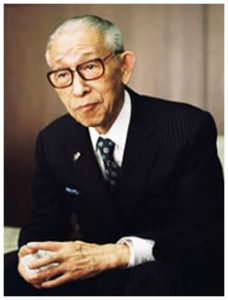
In the mid-1920s, Matsushita came with the idea of battery lamps for bicycles, as at the time, the bicycles used to have oil and wax lamps, that could be lighted only for 3 hours.
With the time, Matsushita became more focused on the marketing of the products, that proved to be a big contribution in raising the sales of his company. By 1929, he managed to establish his company among other Japan’s electrical manufacturing companies and opened a few sales branches in some other places across the country.
In the beginning, he produced the products with brand name National and developed many affordable electric appliances. Those appliances included electric iron, battery lamps, and three-tube model radio, etc. In 1940, during the second world war, Matsushita was forced to sign government military contracts. Those contracts helped him establish Matsushita Shipbuilding Company and the Matsushita Airplane Company. Although with these big achievements, due to the war, Matsushita lost 32 of his manufacturing factories and sales offices situated in the various parts of the country.
In 1951, during his tour to the USA, he realised that in order to help Japan recover from all the losses of the second world war, adoption of advanced Western technology was essential. In 1952, Matsushita signed a contract with Philips of the Netherlands. The company saw huge growth between the time of 1950 to 1973 and introduced new home appliances to the Japanese customers. In 1973, he retired from all of his duties for Panasonic.
Personal Life
Matsushita was married to Mumeno Iue, who was a big support for him during his struggle period. Matsushita was always focussed on economic growth of people and has published 44 books based on his social and commercial philosophies. He received the Grand Cordon of the Order of the Paulownia Flowers in 1987. At the age of 94, on 27 April 1989, he died from pneumonia.

Yashica is a Software Engineer turned Content Writer, who loves to write on social causes and expertise in writing technical stuff. She loves to watch movies and explore new places. She believes that you need to live once before you die. So experimenting with her life and career choices, she is trying to live her life to the fullest.
